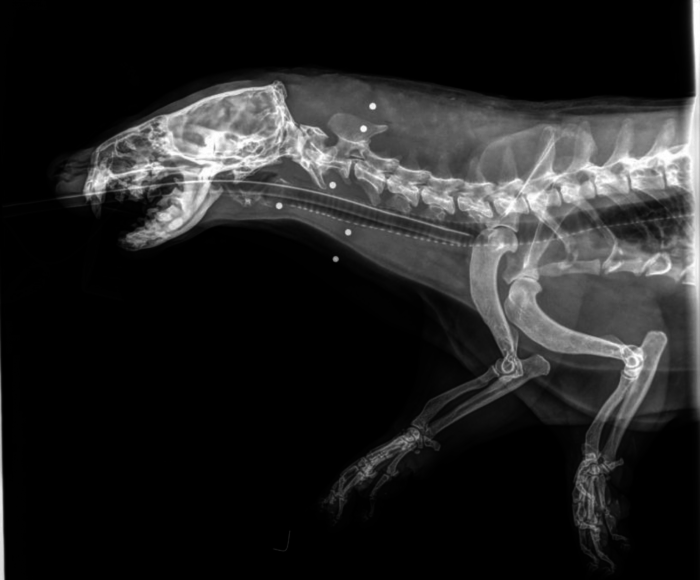Injured Golden Eagle, tracked by East Bay Regional Park, Receiving Care at Lindsay Wildlife Rehabilitation Hospital
WALNUT CREEK — A Golden Eagle, tracked as part of a study by East Bay Regional Park District, was brought in to Lindsay Wildlife Rehabilitation Hospital March 27 after fire fighters in San Ramon discovered the injured bird.
The eagle, believed to be a young female, has head trauma and possible rodenticide toxicity – this occurs when eagles eat small mammals that have ingested rodent poison and then will suffer secondarily from the anticoagulant properties of those toxins – according to Associate Veterinarian Lana Krol, who originally treated and examined the bird. This Golden Eagle, a species the hospital maybe sees eight a year, may be a good example of the dangers of rodenticide, Krol said.
“Weak and dehydrated on presentation to the Lindsay Wildlife Rehabilitation Hospital, the eagle was noticeably perkier after three days of intensive care,” Krol said. “Our goal now is to rehabilitate the bird back to her usual feisty self, and then prepare her for release. Fortunately, the hospital has an exceptional veterinary team and can provide the intensive therapy this bird needs in order to get her back in the sky!”
But this is no regular eagle, it came in with a story; namely an East Bay Regional Park District tracking device on her back. Known as satellite telemetry, the bird is part of a study by EBRPD Wildlife Manager Doug Bell.
The eagle was found by San Ramon Valley Fire Protection District Firefighter Team 34 at Station 30, after residents knocked on the fire station door alerting them to an injured eagle outside. Firefighter Chris Connley along with Firefighter Eric Sabye went out and found the bird sitting on the sidewalk. Soon Contra Costa County Animal Control came and together they helped to catch the sick raptor, Connley said.
“It looked like it was pretty tired and then we tried to catch it and (she) landed on ledge of the window but (she) couldn’t fly more than 50-feet,” Connley said. “It didn’t look right. It’s pretty rare to see this beautiful Golden Eagle sitting on the sidewalk.”
The bird weighs about 11 pounds, and upon follow-up examination Monday, Lindsay Wildlife Director of Veterinary Services Doctor Guthrum Purdin, could see blood in the eye indicating head trauma as well as a loss of sight in the left eye. While there do not seem to be any other major injuries and the eagle has improved, Purdin is optimistic but on guard about the bird’s chances for release.
“My main concern is that the bird regains neurologic function,” he said.
If the eagle improves, then there will be flight and live prey tests before hopefully she is released back into the wild, but that is at least 30-days away, Purdin said.
Carol Lombard, Lindsay Wildlife rehabilitator, who helped treat the bird Friday, said typically eagles are brought in because they have been badly injured by the wind turbines in the Altamont Pass and are too far gone to save.
In fact, that very issue is why this Golden Eagle was being tracked. A satellite GPS monitor backpack on the bird indicated she was being monitored by the East Bay Regional Parks District, which uses satellite telemetry equipment to track various raptors. This young eagle was originally trapped in the Morgan Territory in east Contra Costa County in January 2013 and had a GPS tracker placed on her, said Doug Bell, Wildlife Program Manager for the district.
She is part of a study to track her flight path in the Altamont Pass Wind Resource Area, to help develop more accurate risk maps to inform where new wind-energy turbines should be placed, he said.
“Our goal is to help reduce the impact of wind turbines on eagles, it’s very timely and a race against time,” said Bell, noting wind developer’s requests to Alameda County to repower their wind farms.
The Altamont and Diablo Range area has one of the largest concentration of golden eagles anywhere in the world, according to Bell.
From the GPS tracking, Bell can see that this young Golden Eagle has kept mainly to the northern Altamont Pass, Mount Diablo and the Dublin Hills.
“Her movements have been more local than some of the others,” he said.





























